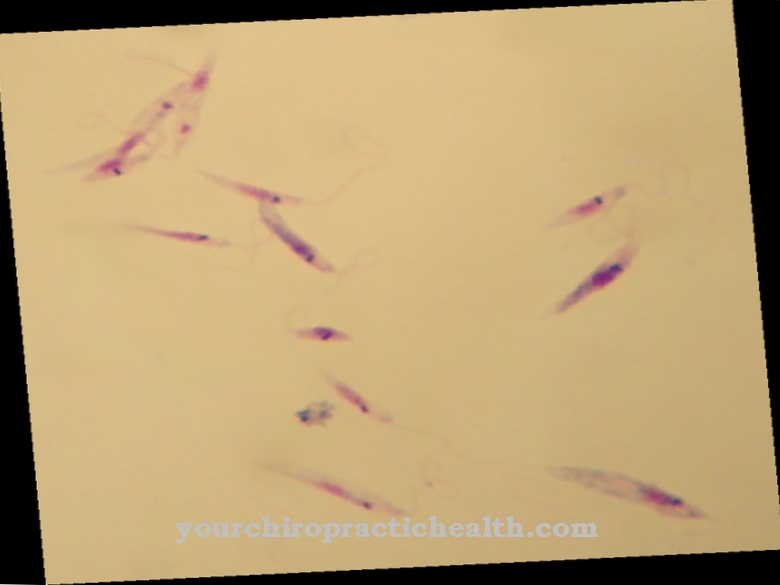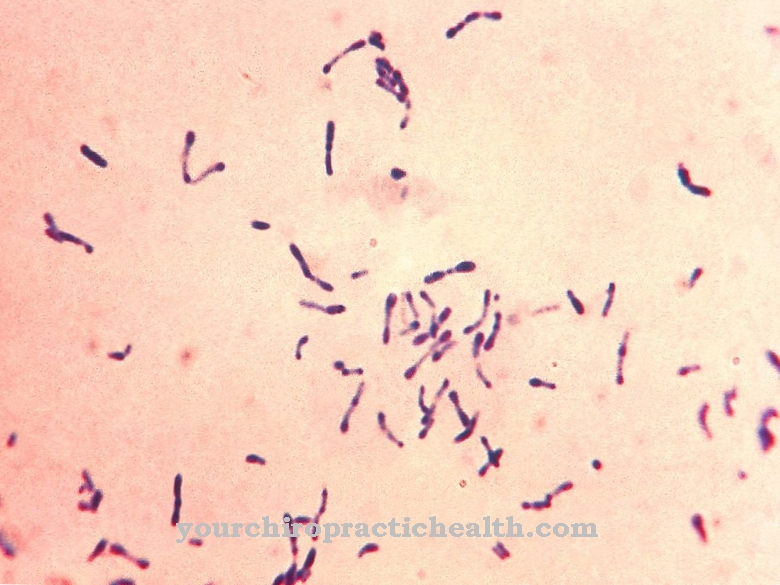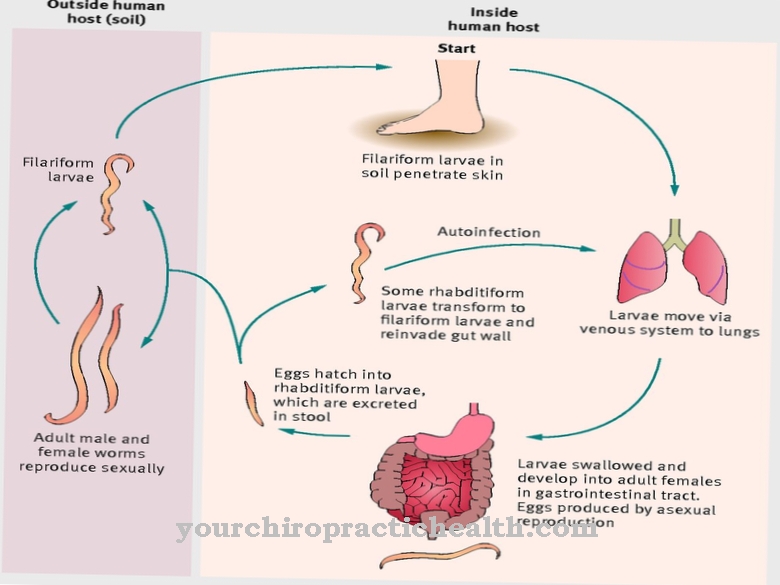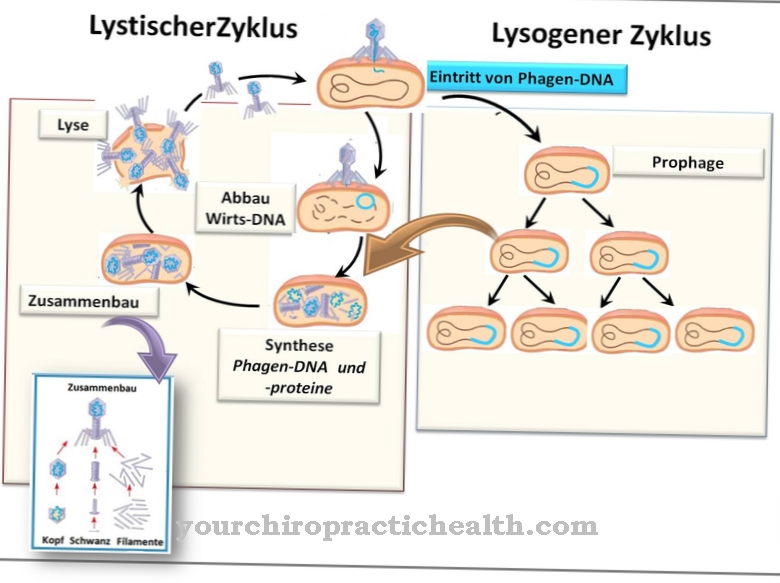The Poliovirus is an RNA virus that belongs to the Picornaviridae family and to the enterovirus group. The virus causes poliomyelitis (polio).
What is the poliovirus
Poliomyelitis is also known as polio or polio. The disease is caused by the poliovirus. Polioviruses belong to the order Piconavirales. There are three different serotypes of the poliovirus species. Serotype 1 is the most common and often causes serious illness. Serotype 2 produces rather mild courses. Type 3 is rather rare, but causes an extremely serious disease process.
Polio has been known for a long time, but it was not until the beginning of the 20th century that polio was recognized as an infectious disease spread through contact. In 1908 Karl Landsteiner and Erwin Popper were able to prove that the polio virus triggers the dreaded polio.
The poliovirus has a very simple structure. It has a diameter of 28 to 30 nanometers and is uncovered. Each of the round virus particles contains a copy of a single-stranded RNA. This is covered by an icosahedral capsid, which is composed of copies of the four capsid proteins. The virus RNA contains a so-called internal ribosomal entry point (IRES) in one area. The virus RNA is translated into the host cell via this entry point. In order to get into the host cell, the virus needs the CD155 protein as a receptor. The poliovirus can then multiply in the cell fluid of the host cell.
Occurrence, Distribution & Properties
Before the introduction of the polio vaccination, the viruses were spread all over the world. Since the virus was previously found everywhere in Europe, the first contact with the virus usually took place in childhood. That is why poliomyelitis is still called polio today.
Today more than 80% of the world's people live in a polio-free area. America, the West Pacific region, Europe, and Southeast Asia are polio-free according to the World Health Organization (WHO). The last case of the disease in Germany was registered in 1990. Endemic polio diseases are now only to be found in Pakistan and Afghanistan. Individual cases in Russia, Turkmenistan and Kazakhstan are also known.
The only known reservoir for polioviruses is humans. The virus can also only reproduce in human cells and in the cells of some other primates. It is mainly transmitted via the faecal-oral route through smear infections.
The polioviruses preferentially attack the intestinal cells. Shortly after the infection, the intestinal epithelia of the sick person produce many virus cells. Within a short time the sick excrete 10⁶ – 10⁹ infectious viruses per gram of stool. The virus also multiplies in the epithelial cells of the pharynx. This means that the virus can also be transmitted aerogenically via droplet infection immediately after infection. The worse the hygienic conditions, the easier it is for polio infections to spread.
In the body, the virus attacks the lymph nodes and then reaches the nerve cells of the anterior horn in the spinal cord via the blood and lymphatic pathways. These ß-motor neurons control the striated muscles. In response to the infection of the nerve cells, immune cells, the leukocytes, migrate into the spinal cord. This causes inflammation in which the nerve cells of the spinal cord are severely damaged or even destroyed.
In addition to the spinal cord, the brain is also often affected by the inflammation. Inflammatory infiltrates and nerve cell destruction are found particularly in the elongated marrow, the bridge and the cerebellum.
Illnesses & ailments
The incubation period is between 3 and 35 days. More than 90 percent of all infected people show no symptoms. The disease is asymptomatic, but neutralizing antibodies are formed. This process is known as silent celebration.
In abortive poliomyelitis, a three-day infection develops after one to two weeks, which is accompanied by fever, fatigue, vomiting and diarrhea. This milder form of poliomyelitis heals in most cases without any consequences or complications. The nerve cells of the central nervous system are not affected.
The central nervous system is involved in 5 to 10 percent of all symptomatic patients. The prodromal stage is similar to abortive poliomyelitis. People have a fever, feel tired, and suffer from diarrhea or vomiting. This is followed by a one-week fever-free period with no symptoms. Then the patients usually develop a non-purulent inflammation of the meninges (aseptic meningitis). The characteristic paralysis of poliomyelitis is missing, however. It is a non-paralytic poliomyelitis. Meningitis is associated with fever, headache and stiff neck. When examining the spinal fluid, an increased number of cells and an increased protein concentration can be found in the nerve water of those affected.
Only one percent of those infected develop paralytic poliomyelitis. Paralytic poliomyelitis is the most severe form and is "classic polio" in the true sense. After a fever and symptom-free phase of two to ten days after the meningitis, the characteristic morning paralysis occurs. The child was still healthy the night before, and flaccid paralysis occurs the next morning. The paralysis is symmetrically distributed and primarily affects the thigh muscles. The affected regions are often very painful.
In the bulbar form of paralytic poliomyelitis, the areas of origin of the cranial nerves are infected by the virus. The patients have a high fever and difficulty breathing. The circulation regulation is also disturbed. Usually, symptoms of poliomyelitis resolve completely within a year. In some cases, paralysis, circulatory disorders or joint damage remain. Post-polio syndrome can appear as a long-term consequence after years or decades. It manifests itself in the form of extreme fatigue, muscle wasting and muscle pain.

























.jpg)


